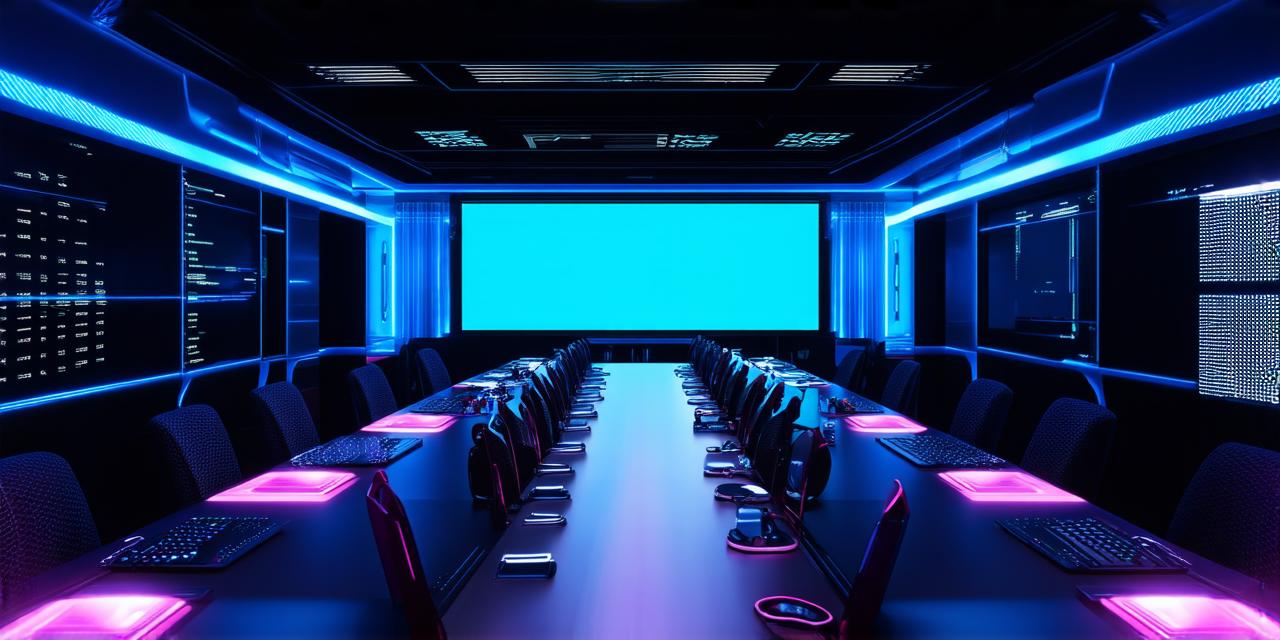Virtual reality (VR) is transforming the way we work and interact with each other. From remote team collaboration to immersive training simulations, VR has opened up new possibilities in the world of virtual meetings.
In this article, we will explore how developers can enhance virtual reality meetings to improve productivity, engagement, and communication among team members.
1. Enhancing Virtual Reality Meetings with Interactive Content
Interactive content is a key element of any successful virtual reality meeting. It can help to keep participants engaged and interested in the meeting, while also improving communication and collaboration among team members. There are several ways developers can enhance virtual reality meetings with interactive content, including:
- Gamification: Gamification involves incorporating game-like elements into the meeting, such as points systems, badges, and leaderboards. This can help to make the meeting more engaging and motivate participants to contribute actively. For example, a sales team could use gamification to track their progress in closing deals during a virtual reality meeting.
Collaborative Whiteboards: Collaborative whiteboards allow multiple users to edit and collaborate on content simultaneously. This can be particularly useful for brainstorming sessions or when working on complex projects. For example, an architecture team could use a collaborative whiteboard to design a new building during a virtual reality meeting.
Virtual Reality Simulations: Virtual reality simulations can provide a realistic and immersive experience for participants, making them ideal for training and education purposes. For example, a medical team could use a virtual reality simulation to practice surgical procedures or a pilot team could use a virtual reality simulation to practice flying.
2. Best Practices for Conducting Virtual Reality Meetings
To ensure that virtual reality meetings are effective and productive, developers should follow these best practices:
- Set Clear Objectives: It’s essential to set clear objectives for the meeting beforehand, as this will help to keep participants focused and engaged. Objectives should be specific, measurable, achievable, relevant, and time-bound (SMART).
- Choose the Right Platform: There are several virtual reality platforms available, each with its own unique features and capabilities. Developers should choose a platform that meets their specific needs and requirements, such as Microsoft HoloLens or Oculus Quest.
- Select Appropriate Content: The content used during a virtual reality meeting should be relevant and engaging for the participants. This could include presentations, videos, images, or interactive content, depending on the purpose of the meeting.
- Establish Ground Rules: It’s important to establish ground rules for virtual reality meetings, such as turning off notifications, being respectful to other participants, and taking breaks when necessary.
- Test and Refine: Finally, developers should test and refine their virtual reality meeting process regularly to ensure that it is effective and efficient. This could involve conducting user testing, gathering feedback from participants, and making changes based on this feedback.
Case Study: Enhancing Virtual Reality Meetings with Gamification
A software development team wanted to improve the productivity and engagement of their virtual reality meetings. They decided to incorporate gamification elements into their meetings to make them more engaging and motivate participants to contribute actively.
During each meeting, the team awarded points for specific achievements, such as coming up with a new idea or completing a task on time. The points were then displayed on a leaderboard, which was visible to all participants. This helped to create a sense of friendly competition among team members and kept them focused on achieving their goals.
As a result of implementing gamification, the software development team saw a significant increase in engagement and productivity during their virtual reality meetings. Participants were more motivated to contribute actively and were more likely to stay on task, which helped to improve overall meeting outcomes.
